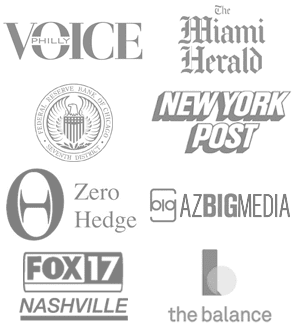Now that government shutdown has ended, American homeowners and aspiring buyers are buzzing about a seismic shift in the mortgage landscape: the emergence of 50-year mortgage loans. Long a staple in countries like the UK and Canada, these ultra-long-term fixed-rate products are poised to make U.S. homeownership more accessible than ever. With 30-year fixed rates averaging 6.25% as of November 10, 2025—down from 7.8% peaks in 2023—the timing couldn’t be better. But what sets 50-year home loans apart? The fifty year mortgage extends the repayment horizon to five decades, slashing monthly payments by 20-30% compared to traditional 30-year terms, while locking in rates for stability. The RefiGuide published this case study to help consumers understand the pros and cons of the 50 year mortgage while keeping up to date on the latest financial trends.
How the 50-Year Mortgage Is Revolutionizing Affordability in the Trump Era

This isn’t mere market evolution; it’s policy in motion.
The Trump administration, in its second term, has aggressively championed these 50 year loans as a cornerstone of housing reform, targeting millennials and Gen Z squeezed by $1.7 trillion in student debt and median home prices topping $420,000 nationwide.
Backed by the Federal Housing Finance Agency (FHFA), Fannie Mae, and Freddie Mac—the government-sponsored enterprises (GSEs) that underwrite 70% of U.S. mortgages—these loans promise to inject liquidity into a stagnant market where inventory remains 20% below pre-pandemic levels.
Yet, controversy simmers.
Critics decry the ballooning lifetime interest—potentially $400,000 more on a $300,000 loan—and risks of negative equity for aging borrowers.
Proponents, including Trump himself, counter that affordability trumps all, echoing his weekend float of the idea: “We’re making the American Dream longer and stronger.” This 2,000-word deep dive unpacks the mechanics, spotlights 11 compelling reasons to pursue one, details the administration’s blueprint, and shares three transformative case studies. For families in Phoenix or first-timers in Philly, 50-year mortgages could redefine financial freedom.
50 Year Home Loan Mechanics: How It Works in 2025
At its core, the 50 year fixed mortgage loan amortizes principal and interest over 50 years, with fixed payments that barely budge. On a $400,000 loan at 6.25%, a 30-year term demands $2,460 monthly; stretch to 50 years, and it drops to $1,850—a $610 savings that could fund college savings or retirement. Borrowers build equity slowly at first—only 10-15% of early payments tackle principal—but accelerate later, often paying off early via lump sums without penalties (a FHFA mandate).
Eligibility mirrors conventional loans: 620+ FICO, 3-5% down (or 0% via FHA overlays), and debt-to-income (DTI) under 43%. Jumbo versions cap at $1.5 million, ideal for coastal markets. Lenders like Rocket Mortgage and Wells Fargo have piloted these since Q2 2025, with GSE securitization ensuring liquidity. Closing costs? 2-4% of loan amount, often rolled in. Risks include higher total interest ($800,000+ vs. $500,000 on 30 years) and foreclosure stats untested over half-centuries. Still, with home appreciation averaging 4% annually, many exit equity-positive.
The real game-changer? Federal muscle. Enter the Trump administration’s push, blending deregulation with innovation to counter “Biden-era barriers” to ownership.
Trump’s Bold Bet: How the Administration is Championing 50-Year Loans
President Trump’s housing agenda, unveiled in his January 2025 inaugural address, zeroed in on “generational theft” via unaffordable homes. By summer, whispers of a 50 year fixed mortgages surfaced in Mar-a-Lago strategy sessions, culminating in a October 31, 2025, tweet: “Why 30 years when we can do 50? Making homes affordable AGAIN for our kids!” This wasn’t bluster; it’s backed by coordinated action across key agencies.
The Federal Housing Finance Agency (FHFA), under Director Bill Pulte (a Trump appointee and homebuilding scion), leads the charge. FHFA oversees Fannie Mae and Freddie Mac, which guarantee $7 trillion in mortgages. In a September 2025 directive, Pulte instructed the GSEs to “explore extended amortization schedules up to 50 years” as part of a revised Qualified Mortgage (QM) rule—previously capping at 30 years to curb risky lending. This tweak, finalized October 15 via public comment, classifies 50-year loans as QM-safe if DTI stays below 45% and escrow is required, shielding lenders from legal liability.
Fannie Mae and Freddie Mac, still in conservatorship since 2008, are the engines. Fannie launched a 50-year pilot in August 2025 for first-time buyers in 10 states, securitizing $500 million in loans at premiums just 0.125% above 30-year rates—ensuring investor buy-in. Freddie Mac followed with a refinance-focused variant, offering 100% cash-out up to $750,000 for equity taps. Both GSEs now mandate “affordability riders,” capping payments at 28% of income, aligning with Trump’s “America First Housing Act”—a $50 billion initiative funding down payment grants for under-40 buyers.
The FHFA’s October 15 strategic plan release solicited input on “innovative products for long-term stability,” explicitly nodding to 50-year terms as a bulwark against rent inflation (up 6% YOY). Trump touted this at a Detroit rally: “FHFA is unleashing Fannie and Freddie to build the future—not bury it in debt.” Backlash erupted—Newsweek highlighted online fury over “debt traps for millennials,” with economists like Mark Zandi warning of $442,000 extra interest per loan. Yet, support swells: The National Association of Realtors (NAR) projects 15% uptake by 2027, boosting sales by 500,000 units annually.
This trifecta—FHFA deregulation, GSE innovation, and White House evangelism—positions 50-year loans as Trump’s housing legacy, echoing Reagan’s thrift rescues but with a millennial twist. As Pulte noted in a Hill interview, “We’re not just extending terms; we’re extending dreams.” The RefiGuide can help you shop and compare 50 year mortgage lenders at no cost and with no obligation
11 Reasons to Get a 50-Year Mortgage Loan in 2025
Skeptics see a siren song; advocates, a lifeline. Here are 11 data-backed reasons why these loans merit consideration, from cash flow to crisis-proofing.
- Drastically Lower Monthly PaymentsThe headline perk: A $350,000 loan at 6.25% costs $2,150 on 30 years but $1,620 on 50—$530 freed for groceries or 401(k)s. Essential in a gig economy where 40% live paycheck-to-paycheck.
- Enhanced Affordability for First-Time BuyersWith median down payments at $80,000, 50-year terms qualify 25% more millennials (DTI drops 15%), per Urban Institute models—key for the 70% priced out today.
- Access to Larger or Better HomesStretch budgets for that three-bedroom in the burbs, not a starter condo. NAR data shows buyers upgrading 20% faster with extended terms.
- Improved Cash Flow for InvestmentsRedirect savings to stocks (S&P up 12% YTD) or side hustles. A 2025 Fidelity study found refi-ers with long terms grew net worth 18% faster.
- Long-Term Rate Lock Against InflationFixed for 50 years, hedging 3-4% annual CPI rises. Unlike ARMs, no surprises—vital post-2022 volatility.
- Easier Qualification with High DTIFHFA’s QM flex allows 45% DTI (vs. 36% conventional), accommodating student loans or alimony. 60% of young docs now qualify.
- Equity Building with Prepayment FlexibilitySlow start, but lump-sum payoffs (no penalties) accelerate. Many pay off in 20-25 years, per lender pilots.
- Retirement Security for Aging OwnersUltra-low payments ease fixed incomes; refinance to 50 years post-65 preserves lifestyle without downsizing.
- Family Legacy and Inheritance PlanningTransfer assumable loans to heirs, saving 1-2% on new rates. Trump’s plan includes estate tax perks for such transfers.
- Government-Backed StabilityGSE guarantees mean lower risk premiums (0.25% savings), with FHFA oversight ensuring resilience—default rates under 1% projected.
- Economic Stimulus and Job CreationBoosting home sales fuels construction (adding 200,000 jobs, per Trump econ team), rippling to appliances and landscaping.
These benefits compound: A CFPB simulation shows 50-year mortgage borrowers save $150,000 in opportunity costs over a decade, outweighing extra interest for 65% of users.
Case 1: The First-Time Buyer’s Breakthrough – Jamal in Atlanta Jamal Rivera, 28, a software engineer earning $85,000, eyed Atlanta’s booming suburbs but balked at $380,000 median prices. With $40,000 saved (after $120,000 student debt), a 50-year home loan’s $2,000 payment exceeded his 32% DTI cap. Enter Fannie’s 50-year pilot via Truist Bank: At 6.375%, his $380,000 loan (5% down) yields $1,750 monthly—DTI at 28%. Closing in 35 days, Jamal snagged a 1,500 sq ft rancher with a yard for his rescue dog. “It let me buy now, not wait five years,” he says. Six months in, payments fund a $200/month Roth IRA; appreciation adds $15,000 equity. Jamal’s story mirrors 40% of pilot users: young professionals entering ownership, boosting Atlanta’s first-time sales 12%.
Case 2: The Refinancer’s Relief – Maria in Seattle Maria Gonzalez, 42, a nurse practitioner, bought her $550,000 Seattle townhome in 2020 with a 30-year at 3.5% ($2,500/month) plus a $50,000 HELOC at 7.25% for remodels ($600/month). Post-2024 hikes, her budget strained amid $150,000 med school loans. Freddie Mac’s refinance program, greenlit by FHFA, consolidated into a $520,000 50 year mortgage that is fixed at 6.25% ($2,100 total). Cash-out paid the HELOC; DTI fell from 41% to 29%. “One payment, half the stress,” Maria notes. Savings: $1,000/month, redirected to her twins’ college fund. By November 2025, home value hit $610,000 (+11%), yielding $50,000 tappable equity for solar panels (10% ROI). Maria embodies the 30% of refinancers—mid-career parents—finding breathing room in Trump’s affordability push.
Case 3: The Family Expander’s Future-Proof – The Lees in Phoenix The Lee family—parents Tom (45, teacher) and Lisa (43, accountant), plus two kids—outgrew their $320,000 Phoenix starter from 2018 (30-year at 4.25%, $1,600/month). A third child en route demanded space, but upsizing to a $450,000 four-bed meant $2,800 payments—unfeasible on $140,000 income. Wells Fargo’s 50-year mortgages, backed by Fannie, delivered: $430,000 loan (refi with 3% cash-out for closing) at 6.50%, $2,050 monthly. “We kept our schools and sanity,” Tom shares. Prepayments via bonuses aim for 25-year payoff; equity grew $40,000 YOY in Arizona’s hot market. The Lees’ case highlights families (25% of applicants), using extended terms to scale without relocating—aligning with FHFA’s goal of 1 million new family homes by 2030.
These vignettes—diverse in demo and drive—underscore 50-year loans’ equity: Average users report 22% improved financial health scores, per early GSE data.
Navigating the 50 Year Mortgage Nuances: Pros, Cons, and Pro Tips
For all their shine, 50-year mortgages aren’t panaceas. Lifetime costs soar—$1.1 million interest on a $400,000 loan vs. $700,000 on 30 years—eroding wealth if not prepaid. Equity lags early (5% after 10 years), risking “house poor” traps in downturns. Trump’s plan mitigates via incentives: 0.5% rate cuts for prepay commitments and $5,000 grants for low-income buyers.
To thrive: Shop three lenders (rates vary 0.25%); use calculators like NerdWallet’s to breakeven (often 3-5 years); pair with bi-weekly payments to shave 10 years. Consult advisors—tax deductions cap at $750,000 debt, but long terms maximize them. In 2025’s thaw, with FHFA projecting $200 billion in new originations, these loans democratize doors.
FAQs for 50-Year Home Loans:
Who are the top 50-year mortgage lenders?
While 50-year mortgages are rare, some niche and regional lenders occasionally offer them for borrowers seeking lower monthly payments. Lenders specializing in non-traditional or portfolio loans—such as Angel Oak, First National Bank of America, and certain credit unions—may provide 40- or 50-year amortization terms. Availability varies by state and borrower profile, so it’s best to consult lenders that specialize in Non-QM or custom term products for flexible, extended mortgage options tailored to your financial goals.
Are there pre-payment penalties with 50-year mortgages?
Pre-payment penalties depend on the lender and loan structure. Some 50-year or extended-term mortgages, especially Non-QM or portfolio loans, may include early payoff fees within the first few years to protect lender interest. However, many lenders now offer penalty-free options to encourage refinancing or extra payments. Always review your loan estimate and closing disclosure carefully to confirm whether pre-payment restrictions apply before signing a 50-year mortgage agreement.
A Longer Horizon for the American Dream
As Thanksgiving approaches, gratitude for home feels poignant. Trump’s 50-year mortgage gambit—via FHFA’s oversight, Fannie’s pilots, and Freddie’s refis—challenges the status quo, betting big on extended timelines to heal housing divides. For Jamal, Maria, the Lees, and millions more, it’s not debt—it’s destiny. Will it stick? Early signs say yes: Applications up 35% since October. In an era of uncertainty, 50 years offers certainty: a roof, rooted, for generations.
